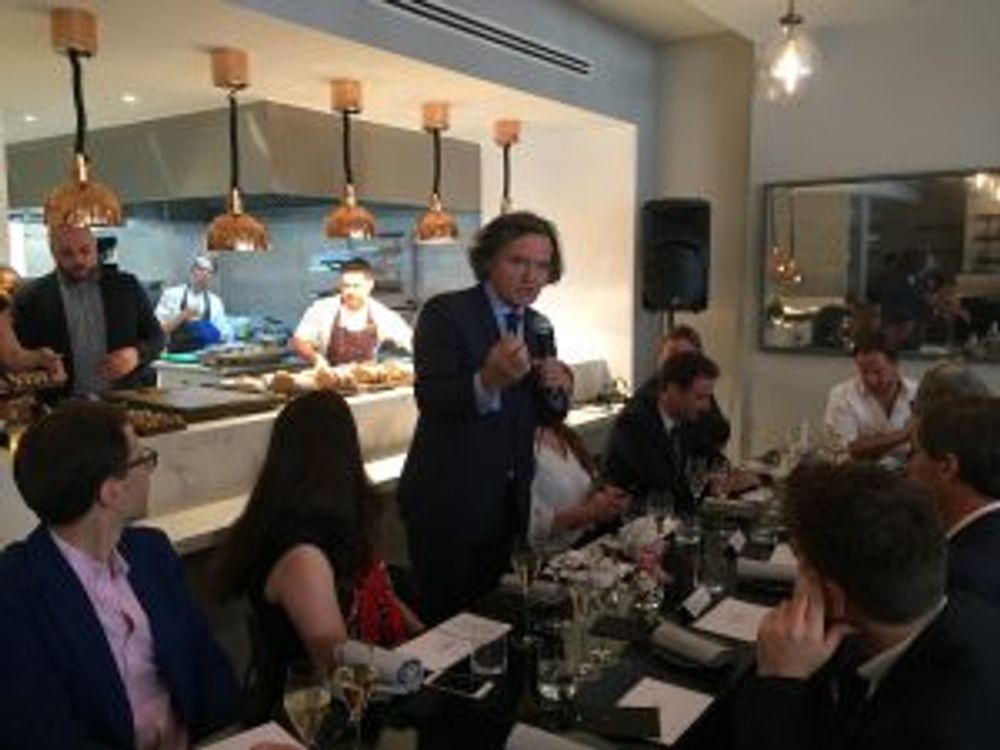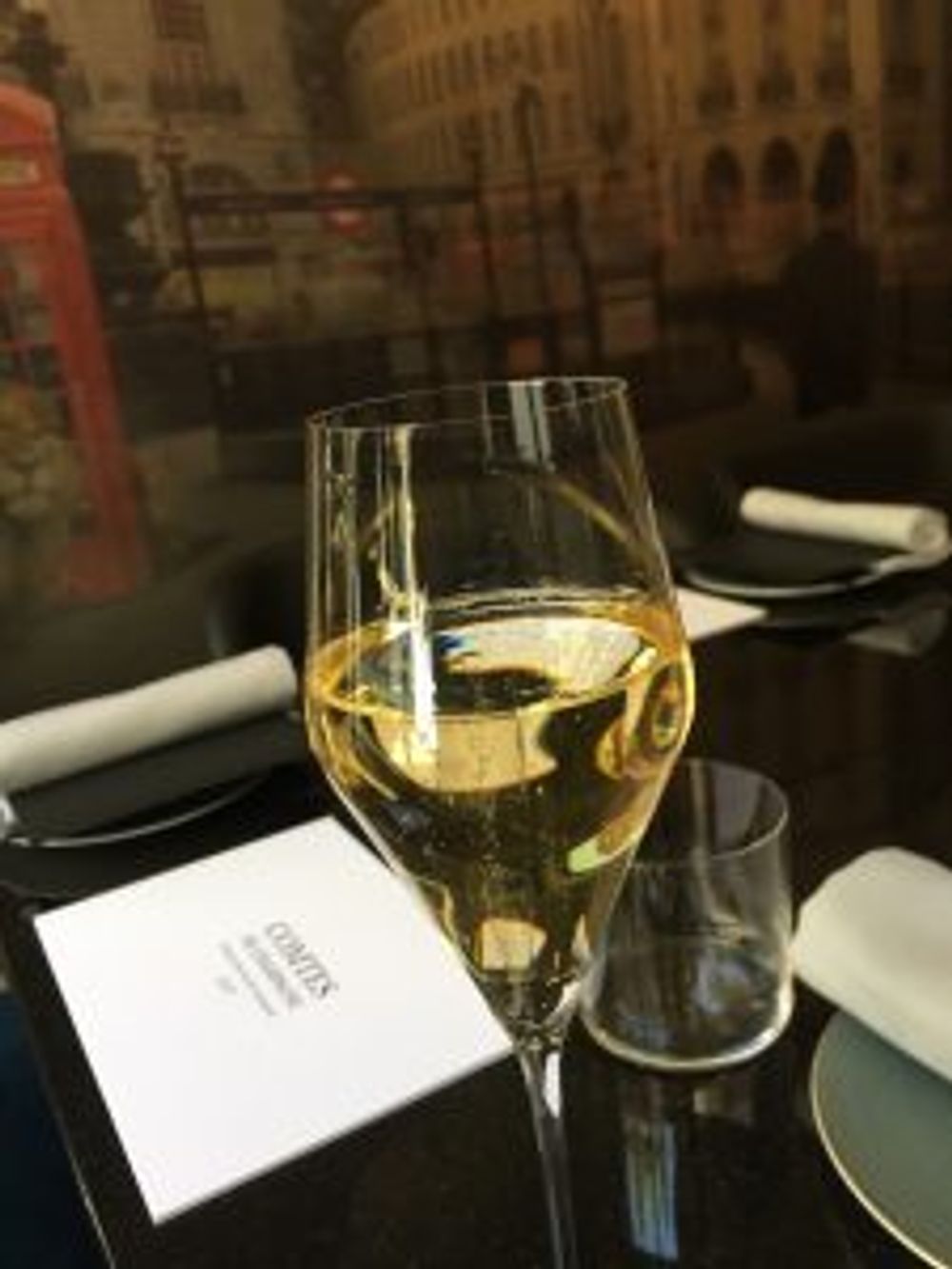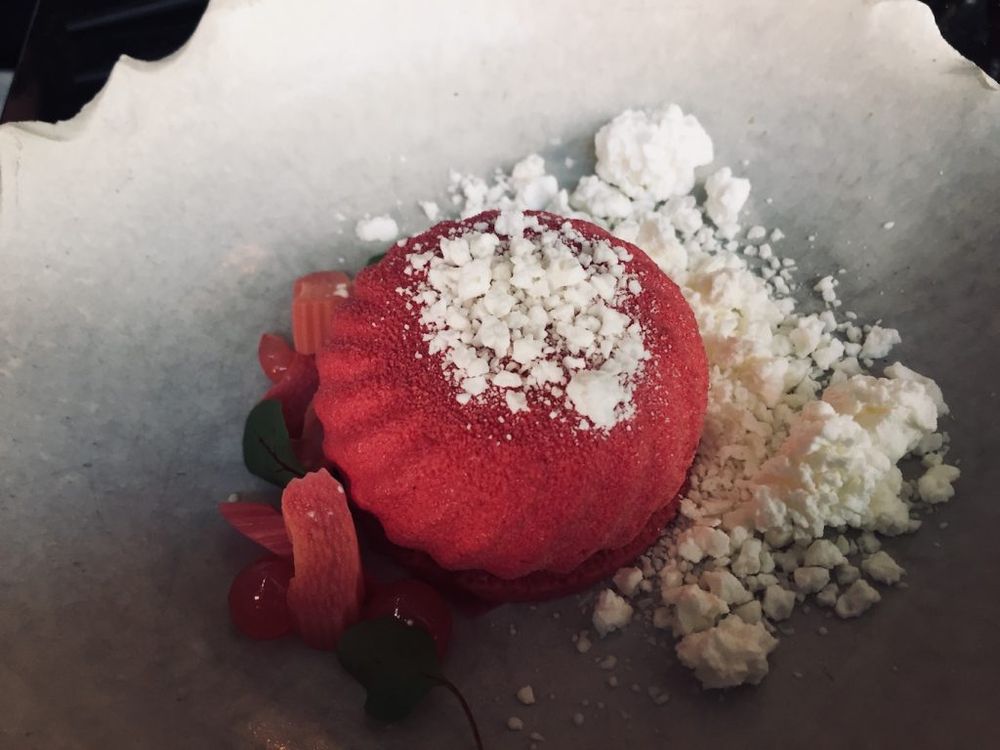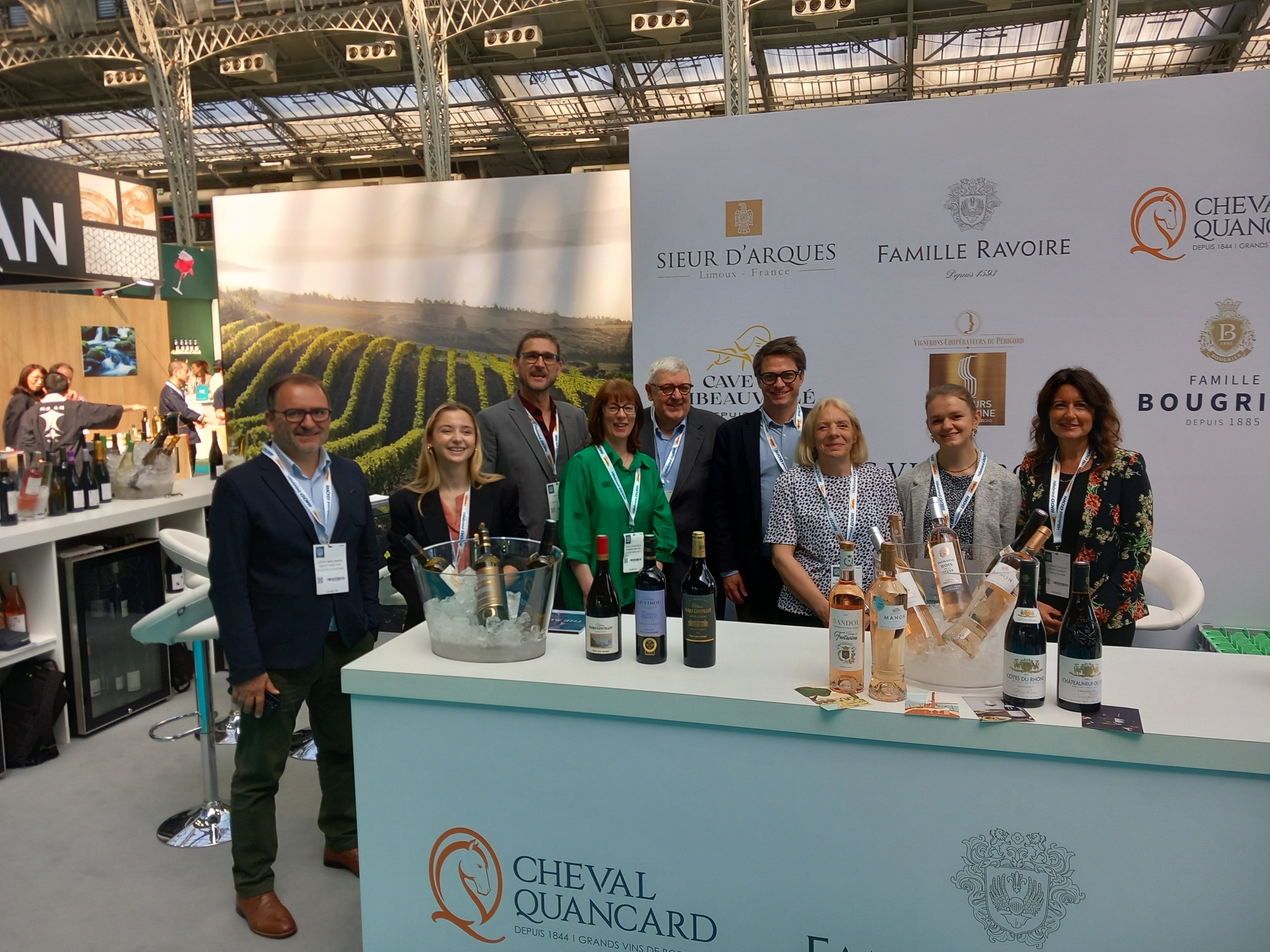The new Comtes de Champagne 2007 has already had quite a fanfare with James Suckling giving it 98 points – the highest score he has ever given Taittinger’s top cuvée.
The bottle is discreet, the label understated and the price at the inexpensive end of the market for a prestige cuvée. So the question surely is whether Comtes de Champagne 2007 at £75 a bottle In Bond is either brash or expensive enough?
Pierre-Emmanuel Taittinger, president of the eponymous family-owned Champagne house, relishes such a challenge.

Pierre-Emmanuel Taittinger: “I am at the cheese course of life”
“I was told by a billionaire the other day that he no longer serves Comtes de Champagne because it looks as if he can’t afford the best. I am delighted. I would hate it if Comtes de Champagne became a billionaires’ drink, no longer affordable to the connoisseur”.
Pierre-Emmanuel is at the Covent Garden restaurant The Frog by Adam Handling launching his latest 2007 vintage of Comtes de Champagne while also introducing new chef de cave Alexandre Ponnavoy. To whet our appetite we have Taittinger Prélude (a very respectable tipple about half the price of the Comtes) to wash down razor clams and what are billed unappetisingly as “frog legs popcorn”. Then on to the main course of Lobster Mac & Cheese and Agnolotti accompanied at last by the debutante 2007 prestige cuvée.
A first sip gives an immediate impression of the wine’s elegance and freshness. There is lemon, overtones of raisins and plenty of acidity. Most surprising is a marked salinity, and it’s this which Ponnavoy rightly sees as defining the wine’s personality. And it’s not simply the individual elements, it’s also the extraordinary balance between them all. The quality and fineness of the bubbles, the excellent mouthfeel and the other attributes a fine Champagne all conspire to make one feel expansive. The sun is shining and our charged glasses have “beaded bubbles winking at the brim”, as the poet says.

It is, thankfully, a Friday afternoon.
With his shaggy hair and aristocratic mien, the 63-year-old Pierre-Emmanuel might seem very much old school – “I am at the cheese course in life, dessert will be coming along very soon.” But modernity clearly carries no terrors for him. Yes, he is delighted that we are sipping from “real flutes” since Champagne is more than just about wine (and certainly more than just money); it is, he declares, about “celebration, about happiness, love between a man and a woman – or two women.”

Pierre-Emmanuel Taittinger and Hatch Mansfield’s Patrick McGrath planting the first vines at Domaine Evremond
And last year, of course, the Taittinger president planted the first vines at Domaine Evremond, the company’s new vineyards a stone’s throw from the M2 in Kent.
But some things don’t and won’t change. Comtes de Champagne is still made exclusively from Chardonnay grapes grown in the five villages of the Côte des Blancs classified as grands crus: Avize, Chouilly, Cramant, Mesnil-sur-Oger and Oger. Described as the most perfect expression of the Taittinger house style, only 35 vintages have been produced since the first cuvée in 1952.
Pierre-Emmanuel somewhat mockingly points out that rivals Crystal and Dom Pérignon are a third more pricey before decrying this world where “you have to be the most expensive” to thrive.
But he clearly is not for turning on this point: one imagines he would be happy if Comtes de Champagne were the prestige cuvée of the masses. It won’t, of course, for one simple reason: it may be cheap by the standards of deluxe Champagne but it is also rare with only a few hundred thousand bottles produced each year compared with Dom Pérignon’s production of five million bottles in any given vintage year. One for the discerning few, then.
Thanks to Greg Sherwood MW for use of the main photo

Dessert: a perfect match for the 2006 Rosé










































